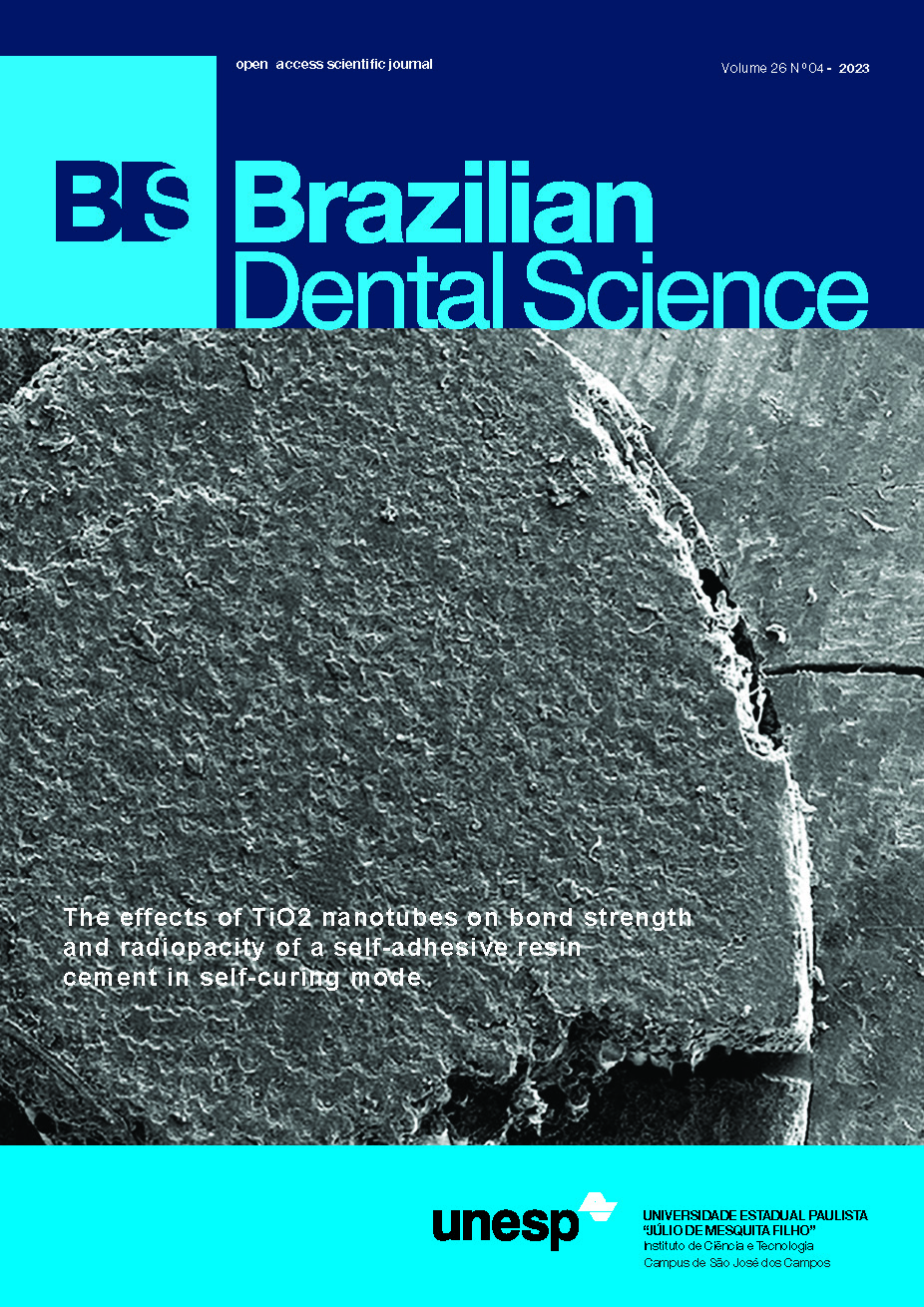Effect of adhesive primer application on shear bond strength of self-adhesive cement to tooth structure and two different CAD/CAM milled blocks
DOI:
https://doi.org/10.4322/bds.2023.e3978Resumo
Objective: This study was conducted to evaluate the influence of the G-CEM ONE adhesive enhancing primer on the shear bond strength of self-adhesive resin cement (G-CEM ONE) to both tooth structure and two different CAD/ CAM blocks (GC Initial LiSi and Cerasmart 270). Material and Methods: Forty specimens (cylindrical-shaped, 5 mm in diameter and height) were milled from both CAD/CAM blocks (20 specimens from each block type). Forty sound upper premolars were sectioned to the level of peripheral dentin, then randomly divided into four groups (n = 10): A1: GC Initial LiSi without adhesive enhancing primer; B1: Cerasmart 270 without adhesive enhancing primer; A2: GC Initial LiSi with adhesive enhancing primer; B2: Cerasmart 270 group with adhesive enhancing primer application. The CAD/CAM blocks were cemented on teeth using a self-adhesive resin cement (G-cem one). The shear bond strength was assessed using a computerized universal testing machine. A digital microscope was used to study the mode of failure. The shear bond strength values data were analyzed statistically using paired t-test and independent t-test at the significance level of (0.05). Results: A significant difference was shown in the shear bond strength values among groups (P =0.000). The highest shear bond strength value was revealed in group A2, while group B1 exhibited the lowest shear bond strength value. Conclusion: Using the adhesive enhancing primer on the tooth’s surface improved the resin cement’s bond strength to CAD/CAM blocks. Additionally, GC Initial LiSi exhibited higher bond strength than Cerasmart 270, with or without the primer.
KEYWORDS
Adhesive; CAD/CAM; Dentin; Resin cement; Shear strength.
Downloads
Downloads
Publicado
Como Citar
Edição
Seção
Licença
TRANSFERÊNCIA DE DIREITOS AUTORAIS E DECLARAÇÃO DE RESPONSABILIDADE
Toda a propriedade de direitos autorais do artigo "____________________________________________________________________" é transferido do autor(es) para a CIÊNCIA ODONTOLÓGICA BRASILEIRA, no caso do trabalho ser publicado. O artigo não foi publicado em outro lugar e não foi submetido simultaneamente para publicação em outra revista.
Vimos por meio deste, atestar que trabalho é original e não apresenta dados manipulados, fraude ou plágio. Fizemos contribuição científica significativa para o estudo e estamos cientes dos dados apresentados e de acordo com a versão final do artigo. Assumimos total responsabilidade pelos aspectos éticos do estudo.
Este texto deve ser impresso e assinado por todos os autores. A versão digitalizada deverá ser apresentada como arquivo suplementar durante o processo de submissão.




























